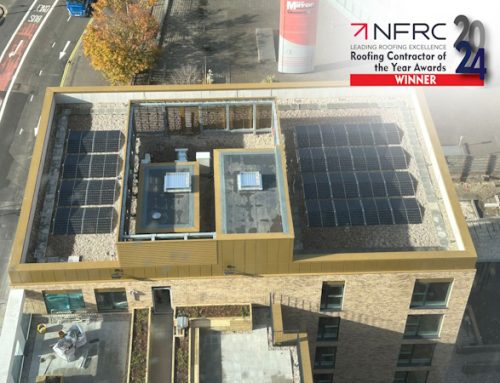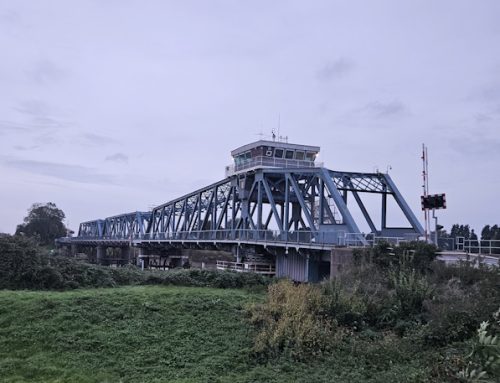Description:
Due to its industry renown for delivering projects featuring a range of disciplines in contrasting environments, leading commercial roofing contractor, BriggsAmasco, was selected for a high-profile refurbishment that presented unprecedented challenges due to its remote location, historic surroundings and volatile weather conditions.
Built in 1821, Sumburgh Head Lighthouse is the oldest lighthouse in Shetland. It is also one of Britain’s best-known lighthouses due to it being a key location in ‘Shetland’, BBC1’s popular crime drama. Now an automated facility, the lighthouse is protected as a category A-listed building. It is the focal point of a site which is owned by the Shetland Amenity Trust.
Following a major restoration, Sumburgh Lighthouse was recognised by Visit Scotland as a World Class Visitor Centre and Nature Reserve. The complex includes holiday accommodation fashioned from the keepers’ houses. Offices for the RSPB, which looks after a surrounding bird reserve, also form part of the site.
BriggsAmasco was selected by principal contractor DITT Construction to supply a new mastic asphalt roof for the lighthouse site’s engine room. The programme was carried out on behalf of client Shetland Amenity Trust in conjunction with DITT Construction, GRAS (architect), and IKO (material supplier). It required BriggsAmasco operatives to remove an existing mastic asphalt system – which had been overlaid with a liquid system by another contractor – prior to the roof’s full renewal.
Overcoming challenges of working in a ‘live’ setting
The Shetland Amenity Trust’s charity status meant that minimising costs was a crucial aspect of the 275m2 roof’s successful installation. BriggsAmasco operatives also had to ensure works incurred minimal disruption to holidaymakers, as all 10 of the site’s accommodation blocks were occupied during the roof replacement. It was also essential works did not interrupt daily operations at the lighthouse café, gift shop and other visitor attractions that remained open during the refurbishment.
To fulfil each stipulation, BriggsAmasco, working in tandem with the project’s stakeholders, acceded to carefully lifting the roof’s existing leadwork before reinstating it as part of a full refurbishment. This made for a more complex works programme, as replacing a roof whilst a previous one is dismantled requires a simpler, less-convoluted operation.
Conscious of cost limitations whilst ensuring the work’s warranty remained uncompromised, BriggsAmasco opted for a more intricate and potentially time-consuming refurbishment programme. This method meant upstands proved more challenging to install.
The project’s complexity was made more acute by the lighthouse’s exposed coastal location on Scotland’s northern-most tip. High winds and near-freezing temperatures were a habitual hindrance to BriggsAmasco operatives. Such was the original roof covering’s poor state of repair, extreme measures were needed to prevent it from blowing off. Had this occurred, the engine room’s technical equipment, an essential aide to the lighthouse’s safe and effective operation, would have been in grave danger of being damaged by the elements. Therefore, BriggsAmasco’s removal of the original roof was complicated by having to position circa 100, 50kg sandbags at different roof locations to prevent its lifting.
Back to basics approach pays dividends during complex installation
Installing a mastic asphalt roof to a high specification, particularly in relation to the challenging Sumburgh Head Lighthouse project, required a real back-to-basics approach. Stripping the existing roof and eliminating all deck flaws provided an initial issue for installers. The process revealed the absence of a vapour control layer. Teams were urgently required to install a temporary waterproofing solution. This was supplemented by the need to line the roof with a night seal at the end of each shift.
Protecting the engine room’s costly machinery from the elements was absolutely paramount throughout the initial stages of the roof’s installation, with the equipment being integral to the lighthouse’s operation. BriggsAmasco teams went the extra mile to guarantee such an outcome.
The installation also required operatives to form guttering that allowed rainwater to flow correctly to prescribed outlets. This was complicated by the presence of upstands in various locations. The upstands measured between 150mm and 600mm in height, requiring BriggsAmasco to devise a pinpoint design strategy to enable the desired water run-off and prevent ponding.
Managing logistics during remote roofing project
Good project management was of utmost importance during the Sumburgh Head Lighthouse works programme as logistically, BriggsAmasco teams faced a completely novel challenge. The lighthouse’s Shetland location required a near 600-mile round trip from BriggsAmasco’s Glasgow HQ to transport material deliveries and company personnel.
The unprecedented journey involved transferring mastic asphalt from England to Glasgow. Three artic lorries then transported the material to Aberdeen, where a customs’ check and a 36-hour boat journey to Lerwick awaited. From there, the lorries undertook a two-hour, single-road drive to the Sumburgh Head Lighthouse site.
Due to a lack of high-end technology in Shetland and surrounding areas, BriggsAmasco’s logistics teams had to think creatively to maintain progress with the materials’ safe delivery. With this aspect of the project successfully completed, the company’s project management team worked hard at coordinating challenging aspects of the roof’s installation with project stakeholders, including the architect. Certain design intentions were unable to be met, thus BriggsAmasco’s expertise became invaluable in devising alternative, effective solutions to each issue.
An excellent working relationship between supply chain stakeholders was key to the project’s continued progress, particularly when the engine room’s roof was revealed to be deeper than anticipated. Joint consultations with supply chain stakeholders on how to overcome the issue ultimately proved successful. The new roof system comprised IKO Permaphalt mastic asphalt hand-laid to 25mm thickness in a two-coat application; sheathing felt layer; 100mm-thick tissue-faced IKO Enertherm MG mechanically-fixed polyurethane insulation (PIR) board; torch-applied vapour control layer. The roof requirement was to replace like-for-like from what was removed.
Shetland’s volatile weather was a further potential hindrance to the project’s progress and most importantly, the safety of roof operatives. Teams took regular breaks during spells of inclement weather, which meant remaining on track with the strict works schedule became an ongoing issue. BriggsAmasco’s under-pressure teams worked out-of-hours to prevent project delays.

Client testimonial
In praising BriggsAmasco’s performance on the Sumburgh Head Lighthouse project, Shetland Amenity Trust Project Lead, Sandy Middleton, said: “It’s a mark of their professionalism that during a one-month construction project, in the heart of a busy visitor attraction and during peak visitor and cruise ship season, not a single negative comment was received from a member of the public, customer or staff member about the construction works.”
“Our thanks to a professional and friendly team for a job well done and for making a potentially challenging project as straightforward as possible for all concerned.”
For BriggsAmasco, the Sumburgh Head Lighthouse roof refurbishment was a once-in-a-generation project in respect of the challenges its location presented. The teams rose to the task, which was completed to the client’s complete satisfaction within the allotted timeframe and budget.
Location:
Shetland
Approx. Area:
275m2
Specification:
Mastic Asphalt, IKO Permaphalt






